Jeremy Holmes Quotes & Sayings
Enjoy the top 12 famous quotes, sayings and quotations by Jeremy Holmes.
Famous Quotes By Jeremy Holmes
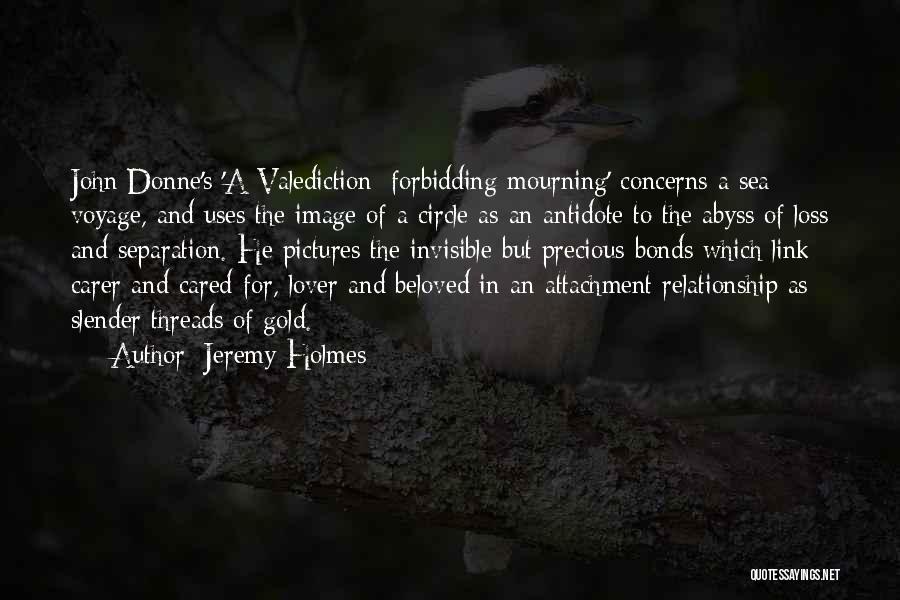
John Donne's 'A Valediction: forbidding mourning' concerns a sea voyage, and uses the image of a circle as an antidote to the abyss of loss and separation. He pictures the invisible but precious bonds which link carer and cared-for, lover and beloved in an attachment relationship as slender threads of gold. — Jeremy Holmes
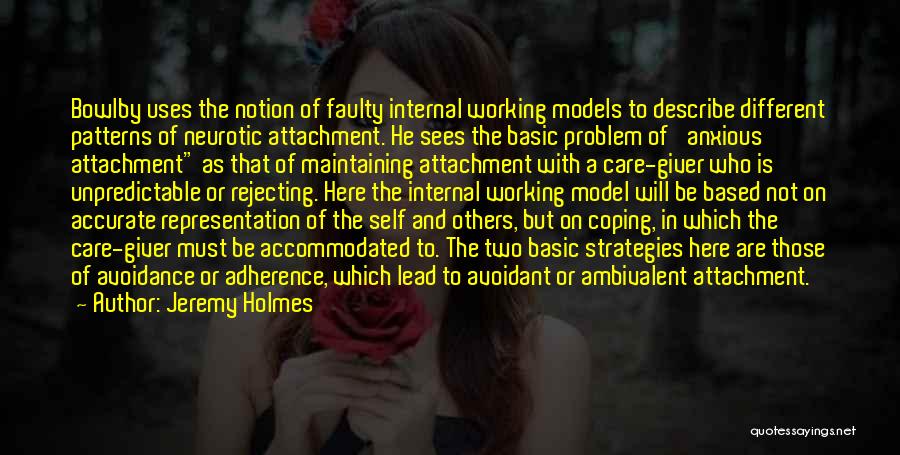
Bowlby uses the notion of faulty internal working models to describe different patterns of neurotic attachment. He sees the basic problem of 'anxious attachment" as that of maintaining attachment with a care-giver who is unpredictable or rejecting. Here the internal working model will be based not on accurate representation of the self and others, but on coping, in which the care-giver must be accommodated to. The two basic strategies here are those of avoidance or adherence, which lead to avoidant or ambivalent attachment. — Jeremy Holmes

Try to prise a limpet away from its rock and it will cling all the harder. — Jeremy Holmes
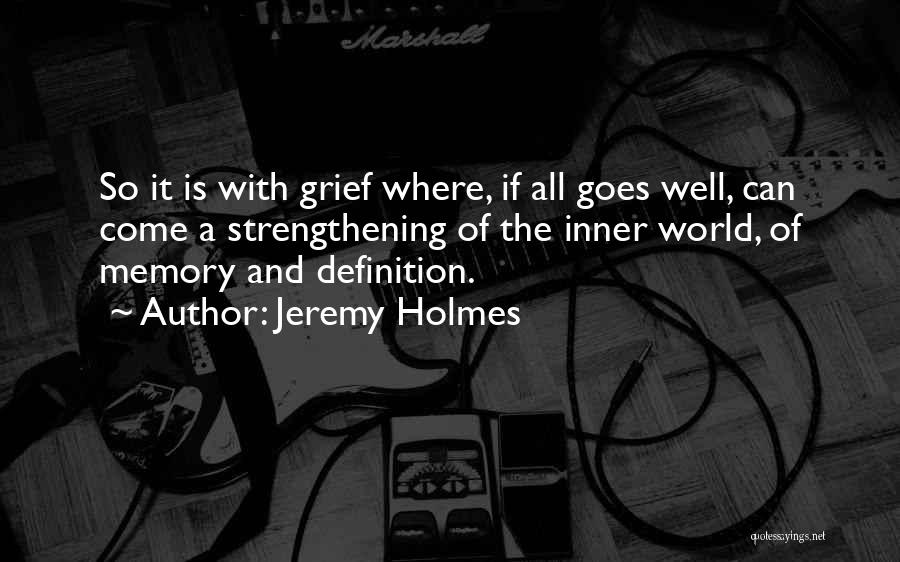
So it is with grief where, if all goes well, can come a strengthening of the inner world, of memory and definition. — Jeremy Holmes
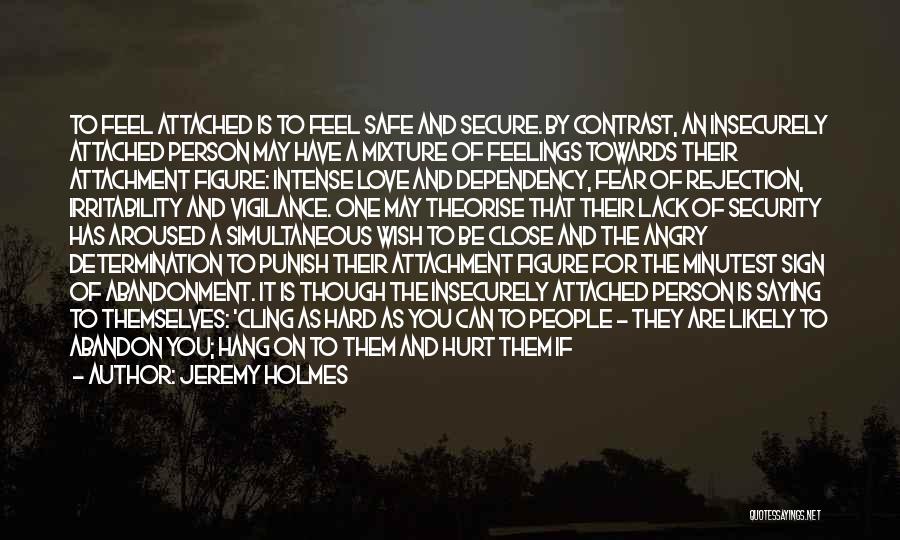
To feel attached is to feel safe and secure. By contrast, an insecurely attached person may have a mixture of feelings towards their attachment figure: intense love and dependency, fear of rejection, irritability and vigilance. One may theorise that their lack of security has aroused a simultaneous wish to be close and the angry determination to punish their attachment figure for the minutest sign of abandonment. It is though the insecurely attached person is saying to themselves: 'cling as hard as you can to people - they are likely to abandon you; hang on to them and hurt them if they show signs of going away, then they may be less likely to do so'. This particular pattern of insecure attachment is known as 'ambivalent insecurity'. — Jeremy Holmes

In Separation (1973a), Bowlby puts forward a theory of agoraphobia based on the notion of anxious attachment. He sees agoraphobia, like school phobia, as an example of separation anxiety. He quotes evidence of the increased incidence of family discord in the childhoods of agoraphobics compared with controls, and suggests three possible patterns of interaction underlying the illness: role reversal between child and parent, so that the potential agoraphobic is recruited to alleviate parental separation anxiety; fears in the patient that something dreadful may happen to her mother while they are separated (often encouraged by parental threats of suicide or abandonment); and fear that something dreadful might happen to herself when away from parental protection. — Jeremy Holmes
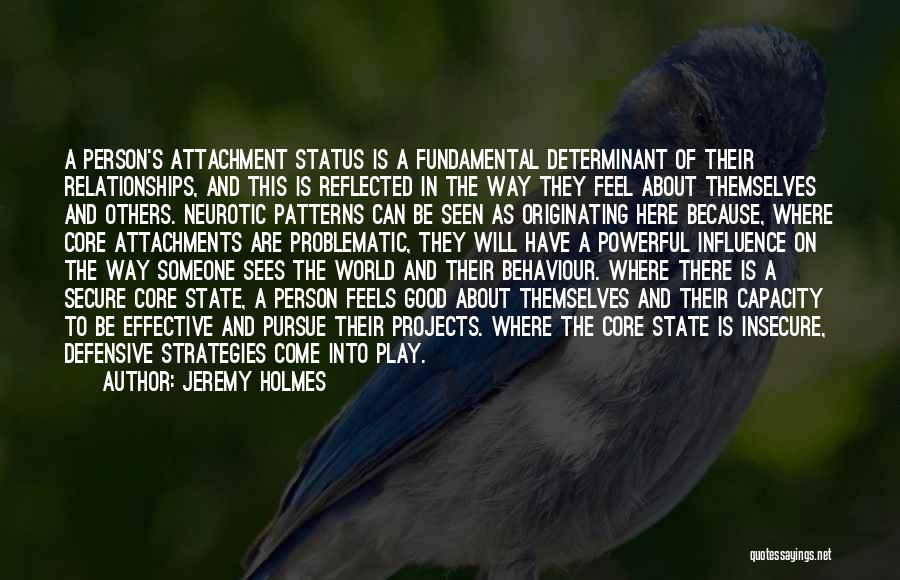
A person's attachment status is a fundamental determinant of their relationships, and this is reflected in the way they feel about themselves and others. Neurotic patterns can be seen as originating here because, where core attachments are problematic, they will have a powerful influence on the way someone sees the world and their behaviour. Where there is a secure core state, a person feels good about themselves and their capacity to be effective and pursue their projects. Where the core state is insecure, defensive strategies come into play. — Jeremy Holmes

Attachment exerted an invisible but powerful pull on the child, just as heavenly bodies are connected by gravitational forces. But unlike gravity, attachment makes its presence known by a negative inverse square law: the further the attached person is from their secure base, the greater the pull of attachment. The 'elastic band' which constitutes the attachment bond is slack and imperceptible in the presence of a secure base. If the secure base becomes unreliable or the limits of exploration are reached, the bond tugs at the heartstrings. — Jeremy Holmes
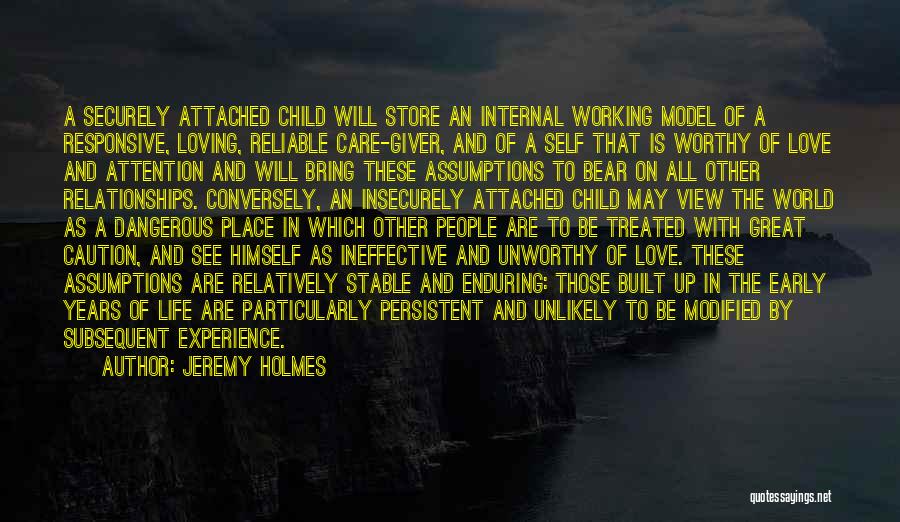
A securely attached child will store an internal working model of a responsive, loving, reliable care-giver, and of a self that is worthy of love and attention and will bring these assumptions to bear on all other relationships. Conversely, an insecurely attached child may view the world as a dangerous place in which other people are to be treated with great caution, and see himself as ineffective and unworthy of love. These assumptions are relatively stable and enduring: those built up in the early years of life are particularly persistent and unlikely to be modified by subsequent experience. — Jeremy Holmes

Attachment is a unifying principle that reaches from the biological depths of our being to its furthest spiritual reaches. — Jeremy Holmes
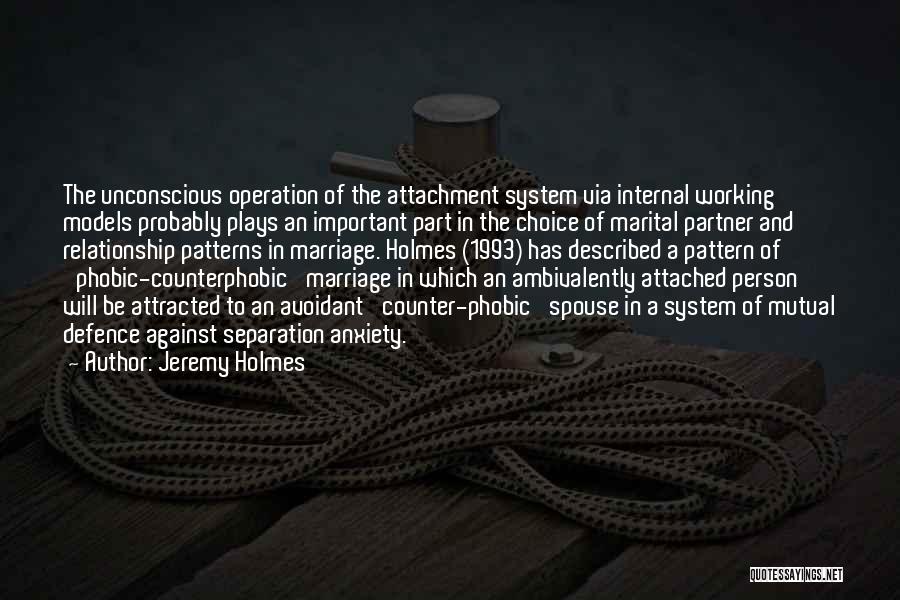
The unconscious operation of the attachment system via internal working models probably plays an important part in the choice of marital partner and relationship patterns in marriage. Holmes (1993) has described a pattern of 'phobic-counterphobic' marriage in which an ambivalently attached person will be attracted to an avoidant 'counter-phobic' spouse in a system of mutual defence against separation anxiety. — Jeremy Holmes
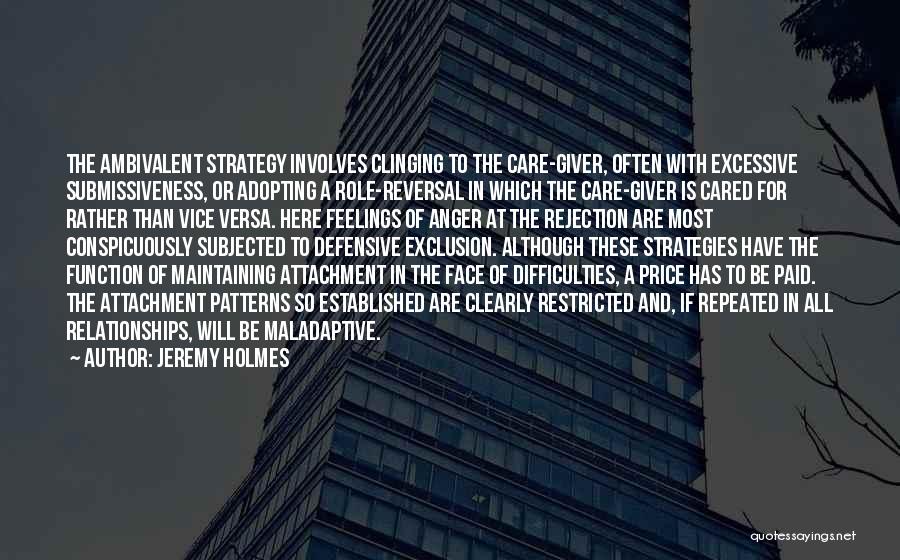
The ambivalent strategy involves clinging to the care-giver, often with excessive submissiveness, or adopting a role-reversal in which the care-giver is cared for rather than vice versa. Here feelings of anger at the rejection are most conspicuously subjected to defensive exclusion. Although these strategies have the function of maintaining attachment in the face of difficulties, a price has to be paid. The attachment patterns so established are clearly restricted and, if repeated in all relationships, will be maladaptive. — Jeremy Holmes





